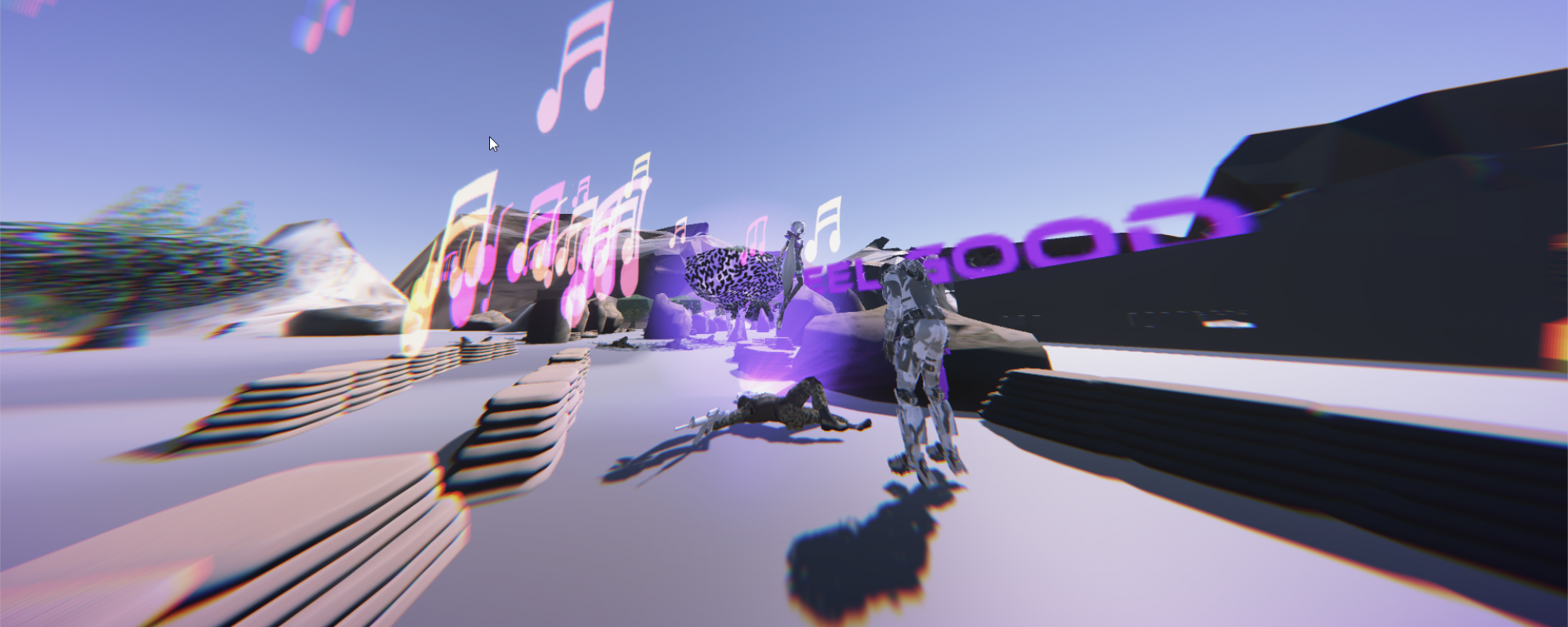A twist on popular “militainment” shooter video games, Project H.E.A.R.T. invites the viewer to place their fingers on a custom biodata gathering device, and then summon their enthusiasm to engage holographic popstar Yowane Haku in “combat therapy.”
The biosensing device gathers data from the VR user relative to blood flow and skin conductance in order to facilitate emotional interactivity: a user’s enthusiasm (spikes in signal amplitude in skin conductance, higher than average heart rate, and shifts in amplitude of the pulse signal) stimulates the holographic pop star to sing in the virtual warzone, thus inspiring military fighters to continue the war. At the end of the experience the user is confronted with their score: how many of their soldiers were traumatized vs how many were enemies killed. There is no further information given whether one has won or lost the game.
In-game dialogue between the soldiers wavers between self-righteous soldier banter and self-help mantras. As soldiers battle not only against a group of enemies, but also against their own lack of confidence in times of global economic instability, the user is challenged to summon their positivity to activate Haku’s singing voice and boost morale. The landscape of Project H.E.A.R.T. was built from geopolitically resonant sites found on Google Maps, creating a dreamlike background for the warzone that brings the user’s emotional body to a virtual space that conflates war, pop music, and video games.
As Kathryn Hamilton pointed out in her 2017 essay “Voyeur Realism” for New Inquiry,
“VR’s genesis and development is in the military, where it has been used to train soldiers in “battle readiness,” a euphemism for: methods to overcome the innate human resistance to firing at another human being. In the last few years, VR’s usage has shifted 180 degrees from a technology used to train soldiers for war, to one that claims to “amplify” the voices afflicted by war, and to affect “world influencers” who might be able to stop said wars.”
Featuring music by Lazerblade, Night Chaser, and Austin Haughton
Project H.E.A.R.T. also features the voice acting talents of Erin Gee, Danny Gold, Alex Lee, Benjamin McCarthy, Gregory Muszkie, James O’Calloghan, and Henry Adam Svec.
Yowane Haku character designed by CAFFEIN
Yowane Haku Cyber model originally created by SEGA for Hatsune Miku: Project DIVA 2nd (2010)
Thanks to the support of the Canada Council for the Arts and AMD Radeon, Project H.E.A.R.T. was commissioned by Trinity Square Video for the exhibition Worldbuilding, curated by John G Hampton and Maiko Tanaka.
This project would have not been possible without the logistical and technical support of the following organizations:







